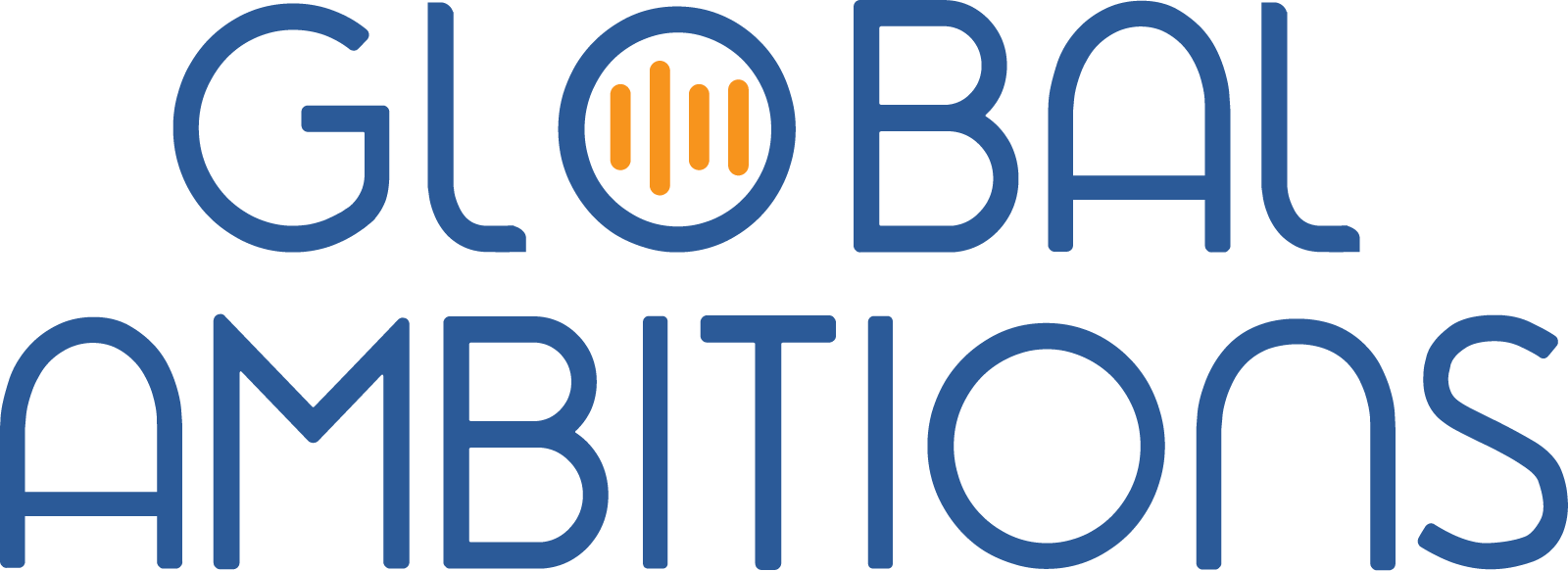Episode 11 with Andrzej Nedoma, CEO of XTRF
Below is a full transcript of this episode.
Antoine Rey 0:22
Hi everyone my name is Antoine, and I will be your host today for this global ambitions podcast episode and today my guest is Andrzej Nedoma and Andrzej is the CEO at XTRF. The topic today is about TMS, and the challenges, the do’s and don’ts of when you’re implementing TMS in your own organization, whether you’re an LSP or client. Andrzej, welcome to the program.
Andrzej Nedoma 0:47
Thank you very much Antoine and hello everyone.
Antoine Rey 0:50
Can you briefly tell us about you and XTRF?
Andrzej Nedoma 0:53
Oh yeah, sure. So I’m the co-founder and CEO of XTRF. And XTRF is the software that helps manage and automate translation projects, whether this is within LSPs or MLVs, translation service providers, or corporate organizations, focusing on managing global implementations.
Antoine Rey 1:12
So you work with both sides then? Clients, as well as service providers?
Andrzej Nedoma 1:18
Yes.
Antoine Rey 1:19
Can you maybe tell us when those organizations usually approach you? When do they realize that they have a need for a TMS, and usually, what is the challenge associated with that?
Andrzej Nedoma 1:32
Yeah, you know, there are different reasons why they come to improve their operations, why they come to us, right? And these reasons will be different between the types of clients. When this is about LSPs, typically this is because they are flooded with work. The type of content, the type of product changes, we’ve seen lots of smaller and smaller projects but into many languages. And so, managing this efficiently requires some automation. Requires a powerful system to help project managers still be efficient within this process.
Andrzej Nedoma 2:05
And of course, it might be also clients who request… our clients who request translation companies to improve the way they cooperate they communicate with their clients so they request a portal, or they require some other semi or automated ways of exchanging projects. And this is when they come to us when it is on the corporate side. So the corporate buyer who wants to have the system… Well, this is also related to increasing the number of languages that they want to produce within the organization because they want to sell into more markets, but they want to keep the same team within the localization department or the language department. So apparently they have more work and more languages, but they would like to more or less keep the in-house budget under control.
Andrzej Nedoma 2:56
And by the way, control and budget and reporting is another big topic with corporates, come with. So how can they really control very well spending per project, per language, per product, and report it up within their structure? They also need a centralized system to do it.
Antoine Rey 3:14
And it seems that, whether it’s on the LSP side or on the corporate side, there’s a certain point in time, in terms of their maturity, when they feel that they need to move to a TMS right? Is it like when they are moving away from a reactive, ad hoc requirement for translation to something that is a more regular requirement, and additional volumes of additional languages on a regular basis, is that correct? Is that what you’re saying?
Andrzej Nedoma 3:43
Yes, exactly. That’s correct. And as I say, there is typically a trigger, right? Something changes, there is an increase in language for example, and this is when they realize, okay, we cannot just, you know, manage everything through email, so we need to have a system to support us. So, when there is a change in business operations. Typically, this request comes in LSPs as I said, we see lots of smaller and smaller projects on the market, and of course for LSPs to still maintain the margin within the smaller volume or value of the project. Well, automation is required.
Antoine Rey 4:18
Okay, and we’ll come back to automation because I think that’s important, and interoperability as well with the integration into different systems. So what’s the main challenge that you see that those companies, when they approach you, that they have when implementing a TMS?
Andrzej Nedoma 4:33
Yeah exactly so we said, let’s give people few things or how to do it and how to don’t do it right? So, typically, when you implement the system when a company implements a system, there is a business reason behind this, right? They want to change something from the present and see an improved future, right? So they want to improve operations in essence, so that way they have a business goal to achieve. Right?
Andrzej Nedoma 4:33
And I think… Well, I say it. It’s really important during the implementation process, never to lose this business goal from your site, right? This is why we met. This is why we decided to implement the system. So for sure, you have to be very strict about or fixed about your goal. You want to get there, but you have to be flexible in terms of the way you get there.
Andrzej Nedoma 5:25
The typical mistake that we see is that when people buy a new system they want to exactly copy the processes as they have it today. And the natural question is, if you want to copy the same procedures or the same process, then probably you don’t need the new system right? You came here to improve something. So of course, some changes, some improvements in the process must happen. That’s one of the reasons why we met, and of course, it requires the teams to be trained to the new processes and also accept the new process. So I think, keep in mind your goal, and then work with your team to elaborate the new way that will be more optimal for your organization.
Antoine Rey 6:08
What is it that people are looking for, and it might be different from the TMS than it is from the client-side, but is it a full integration with Source Repositories or content management system, as well as the automation associated with the workflows, as well as an integration with a CAT tool environment? Or what part do you feel like those clients that approach you are looking for the most?
Andrzej Nedoma 6:33
Yeah, it can be really any of these or everything together. Right, so it’s really important to understand what’s the business situation and why they come to us, right? It might be that they have clients who require cooperation through portals, so in that way, of course, implementation of portals or an automated way of exchanging projects with clients will be important in this implementation process.
Andrzej Nedoma 6:57
It might be that people see there are lots of tasks performed by project managers, which makes the process, inefficient or too expensive, so they want to automate all of these steps that are typically manually executed by project managers so that we free the project managers time so that they can spend more time understanding clients and talking to clients, rather than moving files, right? And in that case, implementing some automation within the workflow will be important.
Andrzej Nedoma 7:27
But it is also quite often that people say they don’t really communicate efficiently with the suppliers with the vendors, so they also take this part under control. They want to implement the vendor portal, they want to communicate with them in a more efficient way maybe through the chat. So this would be another reason.
Andrzej Nedoma 7:49
So that’s why I say, we always start with the business reason. Is this business situation what we want to achieve, what we want to change. In the corporate world, we see lots of times, hundreds of in-house clients or internal clients who buy translation services from the localization department, and their goal is to really centralize all the demand for their services in one department. And in that case, they will also use the portals, which they can place orders within their in-house localization departments.
Andrzej Nedoma 8:21
So you see the business reasons might be different. But they are really always subject to the business goal that they want to achieve, and from the goal, go to the steps or actions that we want to take to achieve this goal,
Antoine Rey 8:37
And they also have the ability to link to their internal financial systems right? for example controlling?
Andrzej Nedoma 8:42
For example, yes, controlling is a big topic typically within corporations. They always like to have more robust reporting accessible on the fly, which’s very important with corporate clients. But in translation companies, of course, as they mature also as businesses they want to have more control on their costs, and their profitability, on the trends within different clients or language combinations. So, this type of business reporting is also important for them.
Antoine Rey 9:10
And we see a lot of corporate clients, large organizations usually starting to develop their own translation management system, as well. What do you say are the pros and cons and what do you see as trends in the industry of buying off-the-shelf products like your product versus an organization building their own?
Andrzej Nedoma 9:33
Yeah, I’ve written, even an article on this topic because now it’s like, lots of people think if they develop this on their own, it will be cheaper and it will be something adapted to their needs. Right, so we have to surely tackle these two questions. Will it be cheaper? No. It will be at least 10 times more expensive. The needs that you see today that you would expect from such a system will surely change over time. It will even change within few months. So if a company decides to develop a system today, according to the needs that they know today, before they are ready, these needs will surely already change. They will already evolve.
Andrzej Nedoma 10:11
At the same time, you have to compare, how much effort are you ready to put into the development of software, of a system. How does it compare to the effort, dedicated to this by a company like ours, where this is our core business, right? So if your core business is to deliver translations, then it’s probably not the business of a software company. Or if you’re a corporate client and you deliver products worldwide or services worldwide, well, probably building software, or a software house is not your core business either. So what chances do you really have to develop faster or cheaper than the company that does it as a core business, and is basically financed by hundreds of companies who buy our product? Surely your product was much much costlier than buying off the shelf.
Andrzej Nedoma 11:04
And the big question that we also said, okay, is our product going to be more adapted to our needs in comparison with the product is accessible off the shelf? This is a tricky question. This is why at XTRF we spend so much time on building the robust API and also preparing a team who can customize the system for the customer needs. So the requirements towards the system which is all off the shelf are to be open enough to be open for connectivity with other systems which will surely be present within your IT infrastructure that you see in any context, right? So an open system is necessary, and then it’s surely better off to the shelf.
Antoine Rey 11:51
And then presumably you’ve seen a lot of LSPs or even corporate clients asking for customization that eventually end up as being standard features of the product, right?
Andrzej Nedoma 12:03
This is the way of, you know, understanding what the client expects, right? So listening to those needs and building these customizations, of course, we receive ideas about which of them could be expanded and adapted to much more open public. Because, of course, each time when a client requires customization, this is very dedicated to their type of projects or needs. And when we want to develop this and make it accessible for hundreds of clients, well it has to be pretty open and customizable in itself right? So it’s always important to expand this feature a bit.
Antoine Rey 12:40
Yeah, so it seems very… to summarize, I suppose, is to find out when is that trigger point in your business when you need to make that transition to the translation management system. And from that trigger point follow the business objectives that you have defined from day one and work closely in a partnership with your organization for instance, in this in this case, to make the right implementation.
Andrzej Nedoma 13:05
Of course. The vision that will be it will be cheap, this is not true. You know my business is to invest in the system all the time. I know how many millions of euros we invest, always, in the development of the product. It is probably not the amount that anyone else would like to invest just for only their benefit.
Antoine Rey 13:25
It’s going to be great for a lot of our listeners to understand, you know, what those trigger points are. You have a large network in this industry working with a lot of LSPs and corporates. Would you recommend someone for us to invite on this podcast?
Andrzej Nedoma 13:40
Yeah, like we said, it’s a big topic today to discuss M&As right? And I think there is a person who has a lot of personal experience, from being bought, buying other companies, managing companies and I’m thinking here about Britta Aagaard, who’s the Chief Operations Officer from Semantix. I’m sure her knowledge and personal experience from these events in her career will be very important and informative for your audience.
Antoine Rey 14:10
Absolutely, that’s a great suggestion and we really look forward to having her on the show then. Well Andrzej, thanks very much for coming on the global ambitions podcast. I think this is a great topic, and that will continue to be important for a lot of people in our industry.
Andrzej Nedoma 14:26
Absolutely, thank you so much for the invitation.

Andrzej Nedoma
CEO of XTRF




